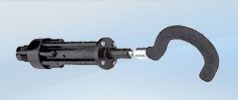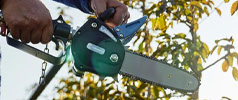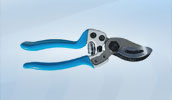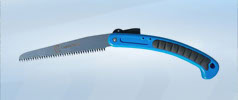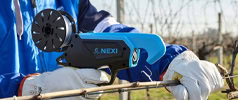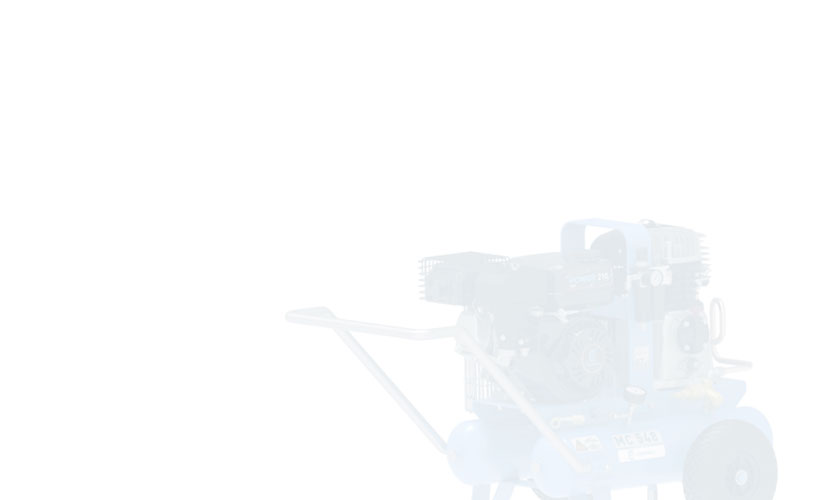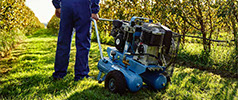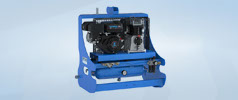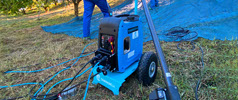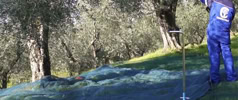Pruning the plum tree is an essential operation to ensure the plant’s health, the quality of its fruits, and a consistent yield over the years. Proper branch management improves light penetration within the canopy, optimizes ventilation, and reduces the risk of diseases.
Understanding the fundamental principles of plum tree pruning helps achieve better production results while also avoiding mistakes that could compromise the growth and yield of your fruit trees, such as using improper or non-professional tools. That’s why Campagnola designs and manufactures electric, pneumatic, and manual pruning solutions that enhance your efficiency in the field, reduce effort, and support your work through advanced technologies.
In this guide, we will explore the best periods for pruning the plum tree, the most effective techniques, and practical advice for managing pruning throughout all stages of the plant’s life cycle.
When to Prune the Plum Tree: Ideal Periods
Choosing the right time to prune the plum tree is crucial for several reasons: ensuring the tree’s proper development, shaping the canopy, preventing the proliferation of pests and diseases, stimulating fruiting, and achieving an abundant, high-quality harvest. Depending on the season, pruning can serve different purposes, and plum tree pruning generally takes place in two main periods of the year.
Winter Pruning is performed during the plant’s dormant phase, between late autumn and early spring. This period is ideal for more drastic interventions, such as training pruning or removing unproductive branches. The optimal time is usually between January and February, avoiding the coldest weeks of winter to prevent frost damage.
Green or Summer Pruning is carried out during the warmer months of the year, aiming to regulate the canopy, improve light penetration, and promote even fruit ripening. During this phase, suckers and water sprouts are removed, and excess vegetation is reduced to improve aeration and lower the risk of fungal diseases.
European Plum, Japanese Plum, and American Plum: Differences in Pruning
There are several varieties of plum trees, and although they are similar, each has specific pruning needs.
- European Plum: This variety tends to grow vertically and requires constant monitoring to prevent excessive branch elongation, facilitating harvesting. Targeted interventions are also needed to thin out excessive fruiting branches.
- Japanese Plum: Known for its vigorous growth and abundant bud production, this variety requires pruning that maintains a balance between productive and vegetative branches. Removing fruiting branches that grow in unfavourable positions or immature fruits helps the tree concentrate resources where needed. Its lateral growth pattern also requires constant monitoring of canopy stability.
- American Plum: Less common in Europe, this variety requires more frequent containment pruning due to its dense canopy. Both winter and summer pruning are essential to control growth, improve light exposure and aeration, and prioritize fruit production over excessive vegetative growth.
How to Prune the Plum Tree: Techniques and Tools
For effective pruning, it is essential to use the right tools that ensure clean and precise cuts without damaging the plant. Choosing the right equipment allows for efficient work while preventing problems caused by inaccurate or poorly executed cuts.
Campagnola offers a wide range of professional tools designed for every need, resulting from over six decades of technological research and a deep understanding of the real needs of those working in the field.
The Right Tools for Pruning the Plum Tree
High-quality pruning shears are essential for making precise cuts on the branches of this fruit tree. Campagnola’s product range includes various solutions, such as:
- Electric pruning shears from the GREEN Line, like STARK XM, STARK XL, and STARK 90-160-220 V1, equipped with interchangeable plug-in batteries that can be removed and used with other electric tools from the same line.
- NOVA shears, the revolutionary Made in Italy innovation available in two versions with a maximum cutting diameter of 35 or 40 mm. As part of the PROFESSIONAL Line, NOVA is lightweight, versatile, equipped with Extra Performance plug-in batteries, and customizable via the free MyCampagnola app.
- Pneumatic pruning shears, designed for those who prefer the power of air-compressed tools, such as STAR 40 WITH ADAPTER (40 mm cutting capacity), SUPER STAR DOUBLE CUT, and the high-performance VICTORY, also available as VICTORY R or VICTORY WITH ADAPTER. The PROFESSIONAL Line also includes pneumatic loppers like STAR 50 and F/6 U, capable of pruning branches up to 50 mm in diameter.
Also indispensable are chain pruners, ideal for cutting even larger branches quickly and with minimal effort. Some solutions from our product lines include:
- Electric chain pruners with plug-in batteries, such as T-REX and T-FOX, which can cut branches up to 8 and 10 cm in diameter, respectively. Extendable versions like T-REX 160-240 or T-REX 250-300 come with telescopic extension poles from 160-240 cm or 250-300 cm. The compact T-CAT M V1 is perfect for fine pruning in any context.
- KRONOS 58, the electric chain pruner from the PROFESSIONAL Line, powered by the LI-ION 700 backpack battery.
- Pneumatic chain pruners, designed for the most challenging and intensive tasks, such as LINX, LASER, and AUTOLUBE M.3, compatible with fixed or telescopic extension poles for reaching the highest branches.
If you prefer manual pruning tools, Campagnola also offers a wide selection of pruning shears, loppers, and saws.
Pruning Techniques
Different types of cuts are performed on plum tree branches, each serving different purposes. Knowing what to do and when allows for better fruit production, controlled growth, and protection against unwanted diseases. Some examples include:
- Training cuts: Shape the canopy to ensure balanced growth and optimize fruiting, primarily in the first years after planting.
- Return cuts: Reduce the development of main branches to stimulate the production of new shoots and maintain controlled growth.
- Thinning cuts: Remove dead, diseased, or damaged branches to improve plant health and prevent diseases.
- Other targeted interventions may include removing woody branches, containment pruning, or complete renewal pruning.
Pruning Plan: First Year and Subsequent Years
The initial phase of a plum tree’s life is crucial for providing a solid, well-balanced structure. In the first year, generally 3-5 main branches are selected and well-distributed, with improperly positioned branches removed. At this stage, the training system is also chosen, such as a vase, pyramid, or espalier shape.
After three years, pruning should focus on productivity. Old and unproductive branches are removed, overcrowded branches are thinned, and excessively vigorous ones are regulated to maintain controlled growth and balanced fruit production.
In subsequent years, maintenance pruning is essential to remove disordered branches, malformed, dead, or broken wood, and to ensure proper light distribution within the canopy. Every 3-4 years, rejuvenation pruning may be necessary to revitalize the tree and stimulate its vigor and productivity.
Practical Tips for Correct Pruning (and Mistakes to Avoid)
Pruning a plum tree requires study, dedication, and practice. Even common mistakes can compromise the tree’s health and fruit quality. To achieve the best results, it’s crucial to avoid frequent pitfalls, such as:
- Over-pruning, which reduces photosynthesis and weakens the tree.
- Using dull tools, leading to irregular cuts that increase the risk of infections.
- Failing to disinfect tools, which can spread pathogens from one tree to another.
- Pruning at the wrong time, especially in extreme weather conditions like frost or excessive heat.
What Are the Most Common Mistakes?
- Over-pruning.
Removing too much foliage can compromise photosynthesis and weaken the plant, making it more vulnerable to diseases and environmental stress. It is essential to maintain a balance between removing unproductive branches and preserving the productive canopy. - Using dull tools.
The use of unsharpened tools results in irregular cuts, making wound healing difficult and increasing the risk of fungal or bacterial infections. Professional tools ensure clean, precise cuts, facilitating plant recovery. Additionally, to promote rapid healing, each cut should be made cleanly, preferably at an angle of about 45°, avoiding leaving stubs that could become entry points for pathogens. - Failure to disinfect tools.
Pruning with unsterilized tools can spread pathogens from one tree to another. It is good practice to disinfect the blades before and after each use with appropriate disinfectant products. - Pruning at the wrong time.
Pruning during extreme weather conditions, such as severe frost or intense heat, can stress the plant and compromise its ability to recover. It is crucial to prune at the most suitable times, depending on the plant’s vegetative state and local climate conditions.
By following these best practices, you can preserve the health of your plum tree, ensuring strong growth and abundant fruit production for many years.
Campagnola Supports You in Every Stage of Your Tree’s Growth
Pruning the plum tree is essential to keep it healthy and promote fruit production. Choosing the right time and applying the correct techniques ensures a vigorous tree and high-quality fruit. A strategic pruning approach, from the first year to full maturity, helps shape the tree’s structure and optimize its productivity. Additionally, avoiding common mistakes such as excessive pruning or using inadequate tools is crucial to ensuring the well-being of your plum tree.
Campagnola is by your side with innovative tools designed for every pruning need, providing the precision, efficiency, and reliability you seek. Trust our long-standing expertise to handle every pruning season with confidence—your plum tree will reward you with an abundant harvest, well-sized fruits, and exceptional quality!







